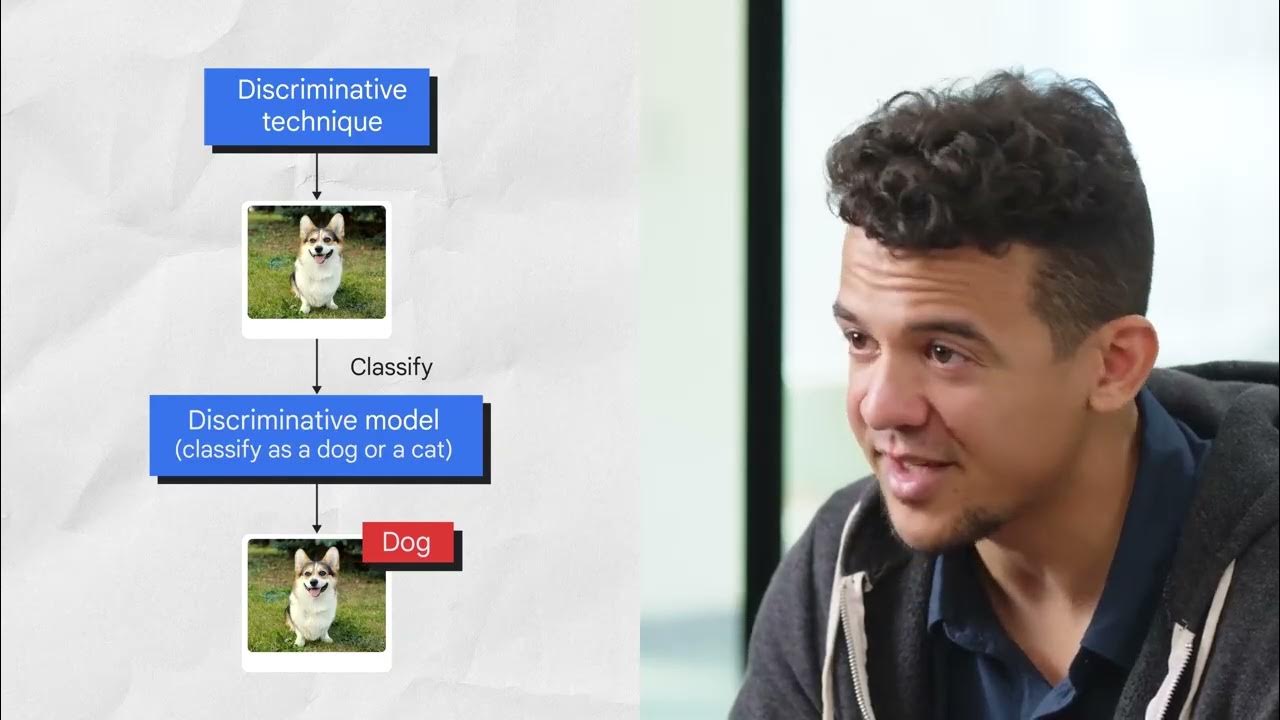Definisi dan sejarah AI
Summary
TLDRThis lecture on artificial intelligence (AI) explores its definition, historical development, and modern applications. AI is categorized into four types: thinking and acting humanly, and thinking and acting rationally. The presentation outlines key milestones from the 1940s to today, highlighting figures like John McCarthy and the evolution of expert systems. It emphasizes contemporary capabilities such as searching, reasoning, planning, and learning, illustrating how AI can mimic human intelligence and improve efficiency. The overarching goal of AI research is to enhance machine intelligence for beneficial outcomes, providing insight into its transformative role in technology.
Takeaways
- 😀 Artificial intelligence (AI) is defined as the simulation of human intelligence in machines, enabling them to perform tasks that typically require human intellect.
- 😀 AI can be categorized into four types: thinking humanly, acting humanly, thinking rationally, and acting rationally.
- 😀 The development of AI began in the 1960s, with early experiments focusing on simple tasks like playing chess and solving basic problems.
- 😀 Key milestones in AI history include the creation of the first electronic computer in the 1940s and the development of neural network models in the 1950s.
- 😀 John McCarthy is often referred to as the 'father of artificial intelligence' for his significant contributions and for coining the term 'AI'.
- 😀 AI research has faced periods of stagnation, known as 'AI winters,' where progress slowed due to limited understanding and technological challenges.
- 😀 Expert systems emerged in the 1960s, utilizing knowledge-based approaches to solve complex problems in various domains, including medicine and engineering.
- 😀 Modern AI applications encompass various fields, including natural language processing, robotics, financial analysis, and medical diagnosis.
- 😀 Current AI methodologies include searching, reasoning, planning, and learning, enabling machines to optimize solutions and improve performance.
- 😀 The ultimate goals of AI are to enhance machine intelligence, deepen the understanding of intelligence itself, and create beneficial applications for society.
Q & A
What is the definition of artificial intelligence (AI) according to the video?
-AI is defined as the area of computer programming that enables machines to perform tasks that, in human terms, are considered intelligent.
What are the four classifications of AI discussed in the transcript?
-The four classifications of AI are: thinking humanly, acting humanly, thinking rationally, and acting rationally.
Who is considered the 'Father of Artificial Intelligence'?
-John McCarthy is recognized as the 'Father of Artificial Intelligence' for his significant contributions to the field, particularly in the 1956 Dartmouth Conference.
What significant development in AI occurred in the 1940s?
-In the 1940s, the first electronic computers were developed, laying the groundwork for future AI programming.
How did early models of neural networks contribute to AI?
-Early models of neural networks, developed by McCulloch and Pitts, illustrated how human neurons could be represented as binary states (on/off), demonstrating that logical functions could be computed with simple neural networks.
What was a major challenge faced in AI development during the 1960s and 1970s?
-A significant challenge was the lack of knowledge in AI programs, which often led to failures in achieving the intended results due to limited understanding of their subject matter.
What is an example of a technique used in AI for reasoning?
-An example of a reasoning technique in AI is its application in games like chess, where strategic decision-making is crucial.
What role does machine learning play in AI?
-Machine learning enables computers to learn from data and improve their performance over time without being explicitly programmed for every task.
What are the current methodologies of AI mentioned in the video?
-Current methodologies of AI include searching, listening (reasoning), planning, and learning.
What was the impact of the expert systems developed in the 1980s?
-Expert systems in the 1980s contributed to industrialization in AI, providing significant cost savings and enhancing decision-making capabilities across various industries.
Outlines

Dieser Bereich ist nur für Premium-Benutzer verfügbar. Bitte führen Sie ein Upgrade durch, um auf diesen Abschnitt zuzugreifen.
Upgrade durchführenMindmap

Dieser Bereich ist nur für Premium-Benutzer verfügbar. Bitte führen Sie ein Upgrade durch, um auf diesen Abschnitt zuzugreifen.
Upgrade durchführenKeywords

Dieser Bereich ist nur für Premium-Benutzer verfügbar. Bitte führen Sie ein Upgrade durch, um auf diesen Abschnitt zuzugreifen.
Upgrade durchführenHighlights

Dieser Bereich ist nur für Premium-Benutzer verfügbar. Bitte führen Sie ein Upgrade durch, um auf diesen Abschnitt zuzugreifen.
Upgrade durchführenTranscripts

Dieser Bereich ist nur für Premium-Benutzer verfügbar. Bitte führen Sie ein Upgrade durch, um auf diesen Abschnitt zuzugreifen.
Upgrade durchführenWeitere ähnliche Videos ansehen

APA ITU ARTIFICIAL INTELLIGENCE? AI 101: PANDUAN LENGKAP AI UNTUK PEMULA DARI NOL SAMPAI PAHAM!

3. Definition of AI

ARTIFICIAL INTELLIGENCE/ KECERDASAN BUATAN. DAMPAK POSITIF DAN NEGATIF.

. [Inteligência Artificial] Módulo 1 - Introdução à Inteligência Artificial aula 1

Introduction to Generative AI

Mengenal Artificial Intelligence (Kecerdasan Buatan) - Kuliah AI #01
5.0 / 5 (0 votes)
